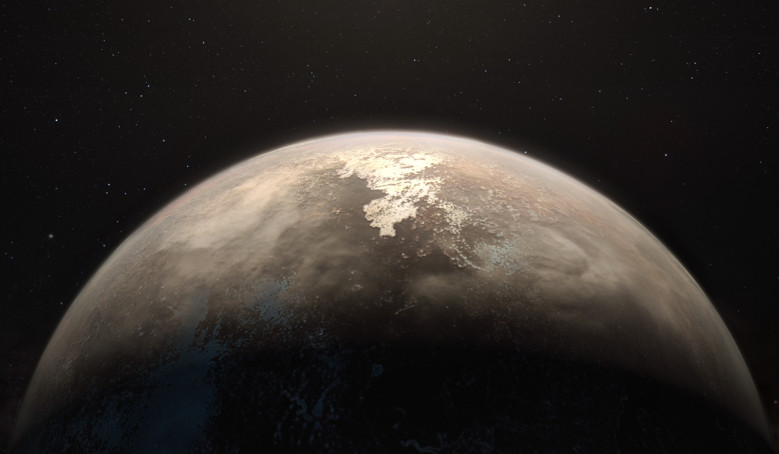An Earth-sized exoplanet that is expected to have a surface temperature which is close to our own, has been discovered just 11 light-years from the Solar System by a team using ESO’s unique planet-hunting HARPS instrument.
Known as Ross 128 b, this possibly pleasantly warm planet orbits a red dwarf star (Ross 128) that is thought to be inactive. This is good news for any life that is trying to cling to existence as it means the planet is not being bathed in deadly ultraviolet and X-ray radiation.
Ross 128 is the “quietest” nearby star to host such a temperate exoplanet and its newly discovered companion - which orbits its host star in only 9.9 days – is the second-closest temperate planet to be detected after the discovery of Proxima b last year. However, in ‘only’ 79, 000 years, this will all change as Ross 128 is moving towards us. Around this period, Ross 128 b will then take over from Proxima b and become the closest exoplanet to Earth!
The equilibrium temperature of Ross 128b is estimated to lie between -60 and 20°C, as despite being 20 times closer to its cool, faint host star than Earth is to the Sun, the exoplanet receives only 1.38 times more irradiation than the Earth.
Ross 128b was found with the help of ESO’s High Accuracy Radial velocity Planet Searcher (HARPS) instrument, that is attached to ESO’s 3.6 metre telescope at the La Silla Observatory in Chile, and although the circumstances look favourable, scientists involved in the project are uncertain as to whether the planet lies inside, outside, or on the edge of the habitable zone where liquid water may exist on a planet’s surface.
“This discovery is based on more than a decade of HARPS intensive monitoring together with state-of-the-art data reduction and analysis techniques. Only HARPS has demonstrated such a precision and it remains the best planet hunter of its kind, 15 years after it began operations,” explains Nicola Astudillo-Defru (Geneva Observatory – University of Geneva, Switzerland), who co-authored the discovery paper.
Although discoveries of this type are relatively uncommon at present, it is likely that temperate exoplanets such as these will be found in greater number with advancing technology. And when they are found, then ESO’s Extremely Large Telescope (ELT) will be on hand to help detect vital organic biomarkers, such as oxygen, in the atmospheres of exoplanets close to us.
“New facilities at ESO will first play a critical role in building the census of Earth-mass planets amenable to characterisation. In particular, NIRPS, the infrared arm of HARPS, will boost our efficiency in observing red dwarfs, which emit most of their radiation in the infrared. And then, the ELT will provide the opportunity to observe and characterise a large fraction of these planets,” concludes Xavier Bonfils, lead author of the paper detailing this discovery.











